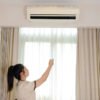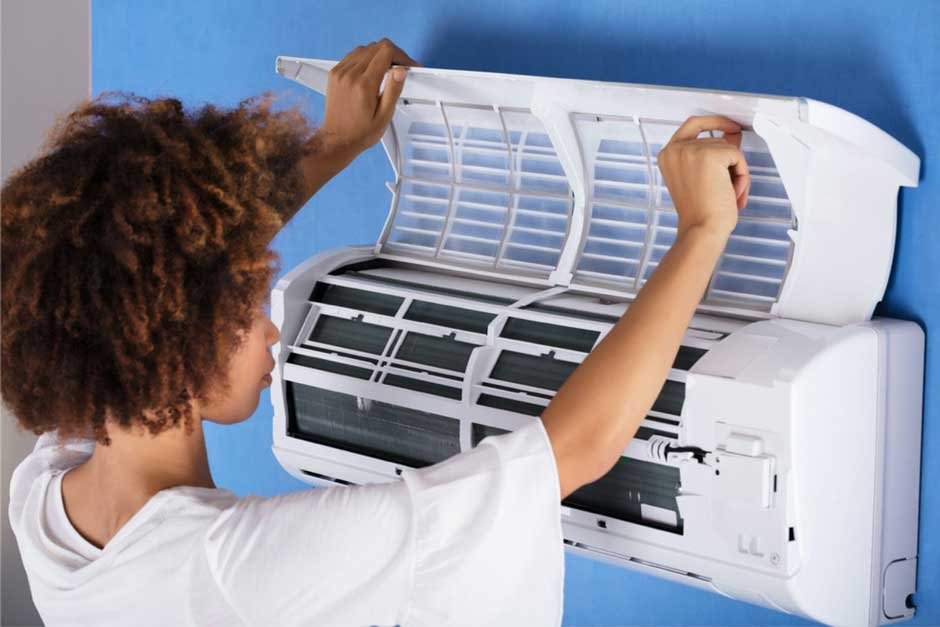With changing temperatures, you should prioritize having a working AC system. Various causes could prevent your air conditioning system from cooling effectively. DIY solutions may seem like a good idea, but the best air conditioning repair solution is to work with an expert. Here are some at-home ways to fix an air conditioning system:
Check Your Thermostat Settings and Power Supply
Check to verify that your thermostat is set to “cool” instead of “heat.” If your thermostat is set in the correct mode, check the power supply to your indoor and outdoor units. Make sure the circuit breaker has not been tripped, and your AC is plugged in. If the AC is still not cooling, and your thermostat is in the right setting, you need to check for another problem.
Clean or Replace Your Air Filters
Dirty air filters can cause your AC system to malfunction. The air filters in your system can collect dust, dirt, and debris over time. This restricts airflow, making your system work harder than it should. Cleaning your filters can be the first step to fixing this problem. If they’re damaged or have years of build-up, replace them. Doing this every few months can help extend the life of your system and lower your energy bills.
Clear Debris from Condenser and Evaporator Units
Outdoor AC units can become clogged with grass, leaves, and other debris. This can make it harder for air to flow through the condenser and evaporator coils, causing your system to work harder and eventually overheat. Clearing away debris around the units and hosing them down can help restore proper airflow.
Assess Refrigerant Levels and Leaks
If your refrigerant is low or leaking, your AC may have trouble cooling. It’s best to leave refrigerant problems to the professionals to avoid accidents or damage to the AC unit. Working with refrigerant can be dangerous, so if you suspect it may be the cause of your cooling issues, it’s safer to call air conditioning repair experts for help.
Examining the Condenser and Evaporator Coils
A dirty condenser or evaporator coils can cause your air conditioning system to stop cooling. Both coils should be clean so the refrigerant can absorb the heat in your indoor space and release it outside. When the coils are covered in dirt and debris, they can’t do their job efficiently.
You can check and clean the coils yourself, but turn off the power first. Use a soft brush and coil cleaner to scrub away the dirt, rinse it with water, and let it dry before turning on the power. If you have concerns about the safety of this repair, call a professional.
Verifying Proper Functioning of Fans and Blowers
To check if the fans and blowers are functioning properly, turn on your AC system and observe the air flowing out of the vents. If you barely feel a breeze, it’s possible that the fans are not spinning correctly. Check the blades for any obstructions or debris that might prevent them from turning. You can use a soft-bristled brush to remove any dirt or dust.
Identifying and Addressing Potential Electrical Issues
Your AC system could have a malfunctioning thermostat, a blown fuse, a tripped breaker, or a damaged capacitor. Check your thermostat to see if it’s set to the right temperature. If that’s not the issue, inspect your breaker box for any tripped breakers or blown fuses. Use a multimeter to check the electrical connections and capacitors for any damage.
Evaluating Ductwork for Blockages or Leaks
The ductwork in your home connects the AC system to the vents and registers that deliver cool air to your indoor space. Any blockages or leaks in the ductwork can cause a decrease in the amount of cool air flowing into your home. Check your ductwork for visible gaps or cracks and seal them with a paste sealant or metal tape. If you can’t find visible damage, you can hire a professional to check for blockages or leaks using a camera inspection.
Get Dependable Air Conditioning Repair Services
Maintain your AC system and replace parts regularly to avoid future problems and help it last longer. A well-functioning AC system unit with a cool air supply will make your home comfortable. You can call a professional HVAC technician for assistance when you need more clarification. Use DIY methods with caution to identify the areas of concern with your coolant system.









